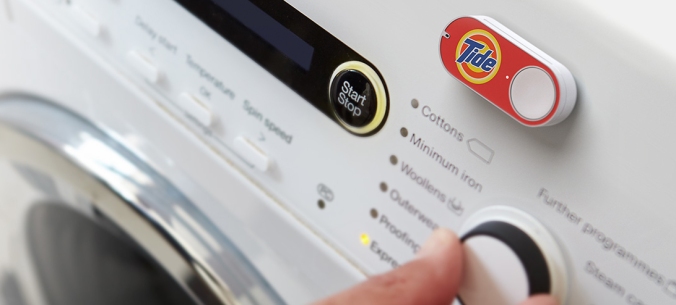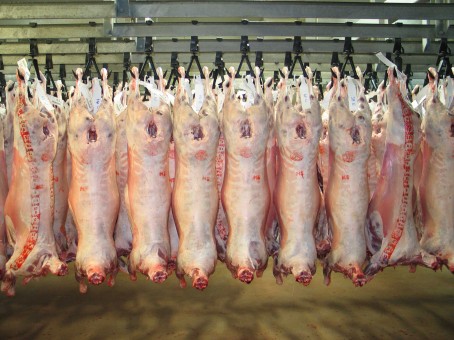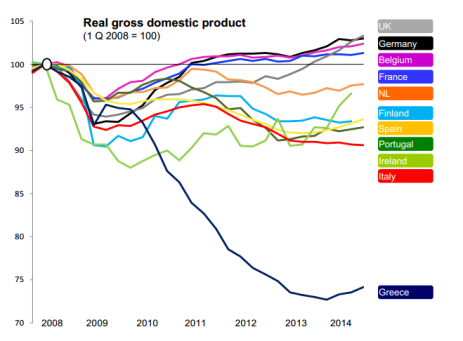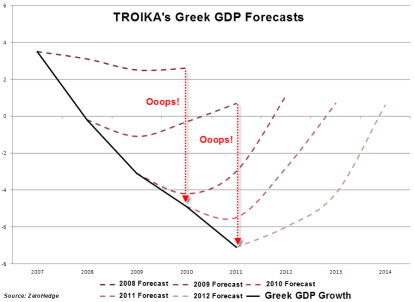Yes but it will be a slow train crash
Following stories in the Australian Financial Review and News Limited last week (Amazon delays Australian launch to September to include fresh goods and Amazon to ‘destroy’ Aussie retail ) I decided to complete this analysis which has been kicking around in draft form on my system for a few weeks.
It is not just Amazon that is the problem. A combination of threats on margin, volume, and customer traffic is threatening the existing business model of the major supermarkets. Not all have to be successful for there to be major effects. To understand how that is happening we need to understand the business model.
A long time ago I tried to get ex Woolworths Chief Executive Paul Simons to come on board to market Australian Pork by becoming Chairman of the Australian Pork Corporation. That bid failed but something he told me about the supermarket business when we met has always stuck in my mind. Paul told me that there were five things that attracted people into supermarkets and while they were there they bought a heap of other stuff. Those five things were discounted bacon, Coca Cola, Pal Dog Food, fresh meat and fresh vegetables. A quick look at the Woolworths weekly specials catalogue for Victoria for the week starting August 31st (when I first started putting together this article) shows discount bacon, a discounted leg of lamb and a discounted whole duck front and centre on the first page. That is followed by a full page spread on fridge mate packs featuring Coca Cola and two full pages of double points on fresh fruit and veg.

Source: Woolworths
Given that was the early nineties we could probably add rotisserie chickens, specialty pet foods, Huggies, petrol vouchers, and reward points to the list. That does not change the point that there are major group of items that get us in the shop and we buy other stuff when we are there. We certainly might buy half price Edgell Red Kidney Beans when we are there over another brand or product because they are on special but it is not going to get us in the door.
Later I chaired a board where a senior executive of one of the major supermarkets was also a board member. He told me that the supermarkets did not make money out of selling things. Their main two sources of income were the cash difference between when customers paid and when suppliers got paid and selling prominent shelf space to suppliers. While the story is illustrative of the business model rather than a statement of fact it does help understand the model.
If we look at the cash from customers as a source of of revenue then inventory turnover is important. The faster the inventory turnover the more money the supermarkets get in before they have to pay their suppliers.There are various numbers available for supermarket inventory turnover rates. The Inland Revenue Department of New Zealand reports median turnover of 14 times with a range of 10-19 for large supermarkets and grocery stores). The ratio of sales to inventory in the Woolworths annual reports 2011-2015 vary from 12.46 to 14.81 although these are affected by their non supermarket sales. Because this is not an investment analysis I think that it is safe to assume that the inventory turnover for Woolworths and Coles supermarket business would be at the higher level of the IRD estimates. If we use 16 x turnover that is equal to turning over inventory every 22.8 days. If the average payment terms to suppliers is 90 days (personal experience) that means that on average the supermarkets have customer cash for 67 days before they have to pay suppliers. With daily sales of Australian Food and Liquor of $115.4m that is a whole lot of cash in the bank. Of course lower interest rates will have damaged the revenue the supermarkets receive form having that cash on hand.
When we look at paying for products to be on shelves and supplier rebates it was reported in The economist last year that In Australia supplier rebates had boosted margins for the major supermarkets by 2.5% point to 5.7% over the past five years (Buying up the shelves)
The other part of the business model puzzle is that the supermarket business is generally a low margin business once all costs are taken into account, although margins in the Australian market have been higher than the rest of the developed world. The Woolworths five year financial summary to 2015 shows that margins for the Australian Food, Liquor and Petrol operations have been between 6.63% and 7.20% before interest and tax. While this is generally a low margin for businesses it is 30-42% higher than the margins in the Woolworths New Zealand supermarkets in the same report.The margin before interest and tax for 2016 fell dramatically to 4.43% as Woolworths lowered prices to compete with Coles and Aldi. The margins before interest and tax for Coles supermarkets in 2016 and 2015 were 4.73% and 4.67% respectively ( http://www.wesfarmers.com.au/docs/default-source/Quick-guides/2016-full-year-results-shareholder-quick-guide.pdf?sfvrsn=2).
While this net margin is quite low the gross margin is much higher For example the gross margin for Woolworths was 25.37% and 26.19% for 2016 and 2015 respectively ( Woolworths Financial Reports (pdf )) .
The gross margin is essentially sales minus the costs of purchasing goods for sale. This means that the difference between gross margin and net margin is all the other costs such as property leases, energy, staff, etc. This is a critical point because it means that the contribution to profit of the last customer or the extra sale is much higher than the average across the business. What this means is that if I drive down the road and turn left to shop at Woolworths or turn right to shop at Coles the loss in sales to the one I do not choose is very high. Whether I turn right or left both those businesses still have to pay their staff, pay their energy bills, pay their property leases, etc. That means that if roughly 18% of customers disappear and they cannot adjust their costs then their profit disappears, and adjusting high fixed costs like leases, staff and energy is very difficult.
The same applies to sales volumes. If the same amount of customers go through the door but buy 18% less in volume the supermarkets do not make 20% less profit, they make virtually nothing if the same costs structure remains in place.
So the supermarkets run a high turnover, low margin, high fixed cost business where they make lots of money on inventory turnover and payments/rebates from suppliers. This gives is the basis to look at their strategic future. Attacks to their profitability can come from primarily three points:
- Lower margin business forcing them to reduce margins as Woolworths has done in 2016 to combat the threat of Coles and Aldi in particular. This may be extended further in a major Amazon push into fresh produce.
- Customers being drained away so the high costs structure causes problems for profitability.
- Customer numbers staying the same but buying less every time they go to the supermarket.
Lets look at each of those individually:
Customer numbers staying the same but buying less every time they go to the supermarket.
This is the most serious threat to the long term viability of the supermarket businesses. The threat is analogous to guerrilla warfare or asymmetric warfare. Only some of the attacks need to be successful for the supermarkets to be in trouble. People will still go to the supermarket but there purchases will be reduced.There have been lots of efforts to look at direct delivery models with varying success but we are now reaching the point where multiple models are developing that have a good chance of being successful. This is devastating for the supermarkets because if 40% of people reduce their purchases by 30% that is a 12% reduction in overall sales. But the supermarkets will still have to operate their existing business model to retain the other 60%of customers as well as to be able to retain the people that have reduced their purchases but are still coming into the store. Lets look at some of their threats:
Dollar Shaver Club

These guys run a direct delivery service for razors direct to your door. They combine an irreverent marketing attitude with social marketing that gives you free blades if you recommend a friend. They promise to reduce your costs of shaving and take all the friction out of the process. I don’t use a razor any more as I use clippers to manage my George Clooney like designer stubble, but if I did use razor I would sign up today – no longer buying that product from the supermarket. A small individual purchase perhaps but they start to add up.
Blue Apron

Blue Apron promotes direct delivery of all the ingredients you need to prepare a healthy great tasting meal. I met with one of the Nokia trends scouts in Austin Texas a few weeks ago and she is an avid fan. As Blue Apron delivers the exact amount she needs to make a meal there is no waste and she said that the service is not costing her any more money than shopping for the ingredients. It is estimated that Australians throw away about $8 billion dollars of food a year (fact checked by the ABC) so certainly there is a cost saving there. While they are not yet in Australia the business model is one that is easily transferable here.
Youfoodz

Youfoodz is a company that will deliver a week’s worth of fresh (non frozen) meals direct to your door in Australia. You can choose all meals or a proportion of meals and snacks. I have done a cost comparison on their service and while they are slightly more expensive than making your own food for quality meals the difference is not large. Again there is no waste and for the time poor there is no shopping or preparation to be done. For people working long hours or running their own businesses where more time means more money this is a very viable alternative.
Amazon Dash
 Amazon Dash is a programmable button that you can put in your house. The example here is one of putting one on your washing machine so that when you run out of washing powder you just push the button and washing powder is delivered into your house. It takes all the friction out of buying and I imagine them building in services integrated with Alexa (the interactive home system) so that rather than just buying your normal brand the system can queue up order requests and talk to you about special offers, etc at your convenience. Once adoption gets high enough then Amazon can use its considerable logistics and information system to package up multiple orders, supply weekly orders based on your usage, and give you special offers. It has not really caught on yet but the system is adding more and more brands and Amazon is pushing it out to more countries (Amazon triples Dash Button brand lineup, orders surge 75% in Q1 andAmazon brings its Dash buttons to the UK, Germany and Austria for ordering staples with one touch). It has the smell of a long term strategy to harness all of their capabilities into an offering that makes sense, especially for dry goods.
Amazon Dash is a programmable button that you can put in your house. The example here is one of putting one on your washing machine so that when you run out of washing powder you just push the button and washing powder is delivered into your house. It takes all the friction out of buying and I imagine them building in services integrated with Alexa (the interactive home system) so that rather than just buying your normal brand the system can queue up order requests and talk to you about special offers, etc at your convenience. Once adoption gets high enough then Amazon can use its considerable logistics and information system to package up multiple orders, supply weekly orders based on your usage, and give you special offers. It has not really caught on yet but the system is adding more and more brands and Amazon is pushing it out to more countries (Amazon triples Dash Button brand lineup, orders surge 75% in Q1 andAmazon brings its Dash buttons to the UK, Germany and Austria for ordering staples with one touch). It has the smell of a long term strategy to harness all of their capabilities into an offering that makes sense, especially for dry goods.
So if we think of an example household of an above average income couple (the most attractive customer) that are busy with work or their own business you can imagine a combination of all of these services. They use a service like Youfoodz to have a couple of meals pre-supplied on their two busiest days of the week when a combination of work and commitments for kids activities have them stretched. They use a service like Blue Apron once a fortnight for a lunch or a dinner where they want to cook but want to eat healthy and not think about recipes or shopping. They use Dollar Shave Club for monthly supplies of razors. They install Amazon Dash buttons for washing powder, toilet paper, paper towels, dish washing liquid, and cereal and it all gets delivered. Gradually Amazon influences them through their Alexa to buy more dry goods because the marginal cost of freight is so low the system is cheaper. Convenient and lower cost is a killer combination.
They still go to the supermarket they always went to but slowly but surely the amount they buy there until it is down to 50%. Some families at that level then start questioning the trip to the supermarket and start changing their total shopping habits.
The problem with all this from the major supermarkets point of view is that they don’t really have a strategic response that makes sense because of their legacy model. They cannot abandon the majority of their customers so their model stays the same and their margins get steadily eroded.
If they reduce stock lines then they slide more towards an Aldi/Costco model and they don’t want to go there. If they move to more and more online systems they can sort of compete but they still have to supply their standard customers and that model is based on big stores based in solid catchment areas. If they close one of them or move to a small store model a lot of customers probably end up with their competitor who did not close. So neither wants to be the first to do that. It is a little like the banking branch model problem. Less and less transaction are being carried out in branches but people will not travel far to conduct those less frequent transactions so banks keep branches open for fear of losing customers.
At every step of the way their business model is eroded:
- Lower customer traffic/less spend per customer reduces cash held in the money market.
- Lower customer traffic/less spend per customer erodes margins as there are less customers/customer dollars to spread non cost of goods costs over.
- Lower customer traffic erodes the capacity they have to charge for shelf space. It is a bit like television advertising rates. If you have less eyeballs watching your shows you cannot charge as much for advertising.
The final straw in this nightmare scenario for the major supermarkets may be Amazon moving its vision to applying its impressive logistics and intelligence systems to support a national network of independent specialty shops. This is where the high margin customer of the future, who has already reduced their supermarket purchases as described above, may be headed. If that is the case then the major supermarkets are caught trapped in a legacy business model they cannot get out of and assailed on all sides.
Only 5% of each attack has to be successful. No-one has to destroy them.









 Amazon Dash is a programmable button that you can put in your house. The example here is one of putting one on your washing machine so that when you run out of washing powder you just push the button and washing powder is delivered into your house. It takes all the friction out of buying and I imagine them building in services integrated with Alexa (the interactive home system) so that rather than just buying your normal brand the system can queue up order requests and talk to you about special offers, etc at your convenience. Once adoption gets high enough then Amazon can use its considerable logistics and information system to package up multiple orders, supply weekly orders based on your usage, and give you special offers. It has not really caught on yet but the system is adding more and more brands and Amazon is pushing it out to more countries (
Amazon Dash is a programmable button that you can put in your house. The example here is one of putting one on your washing machine so that when you run out of washing powder you just push the button and washing powder is delivered into your house. It takes all the friction out of buying and I imagine them building in services integrated with Alexa (the interactive home system) so that rather than just buying your normal brand the system can queue up order requests and talk to you about special offers, etc at your convenience. Once adoption gets high enough then Amazon can use its considerable logistics and information system to package up multiple orders, supply weekly orders based on your usage, and give you special offers. It has not really caught on yet but the system is adding more and more brands and Amazon is pushing it out to more countries (

